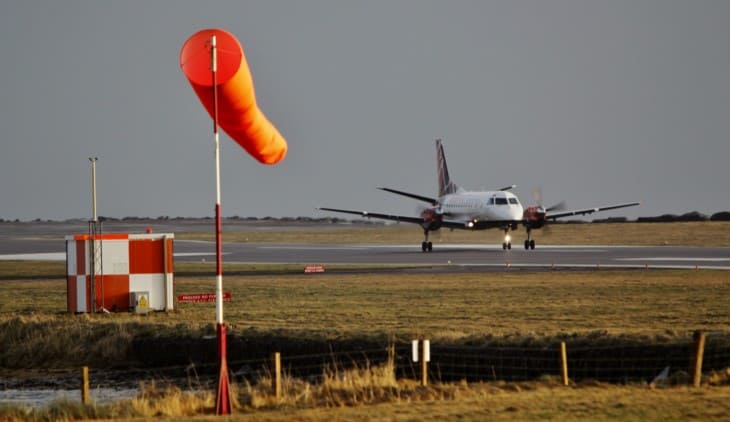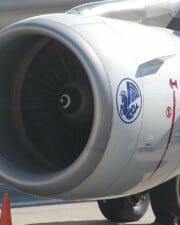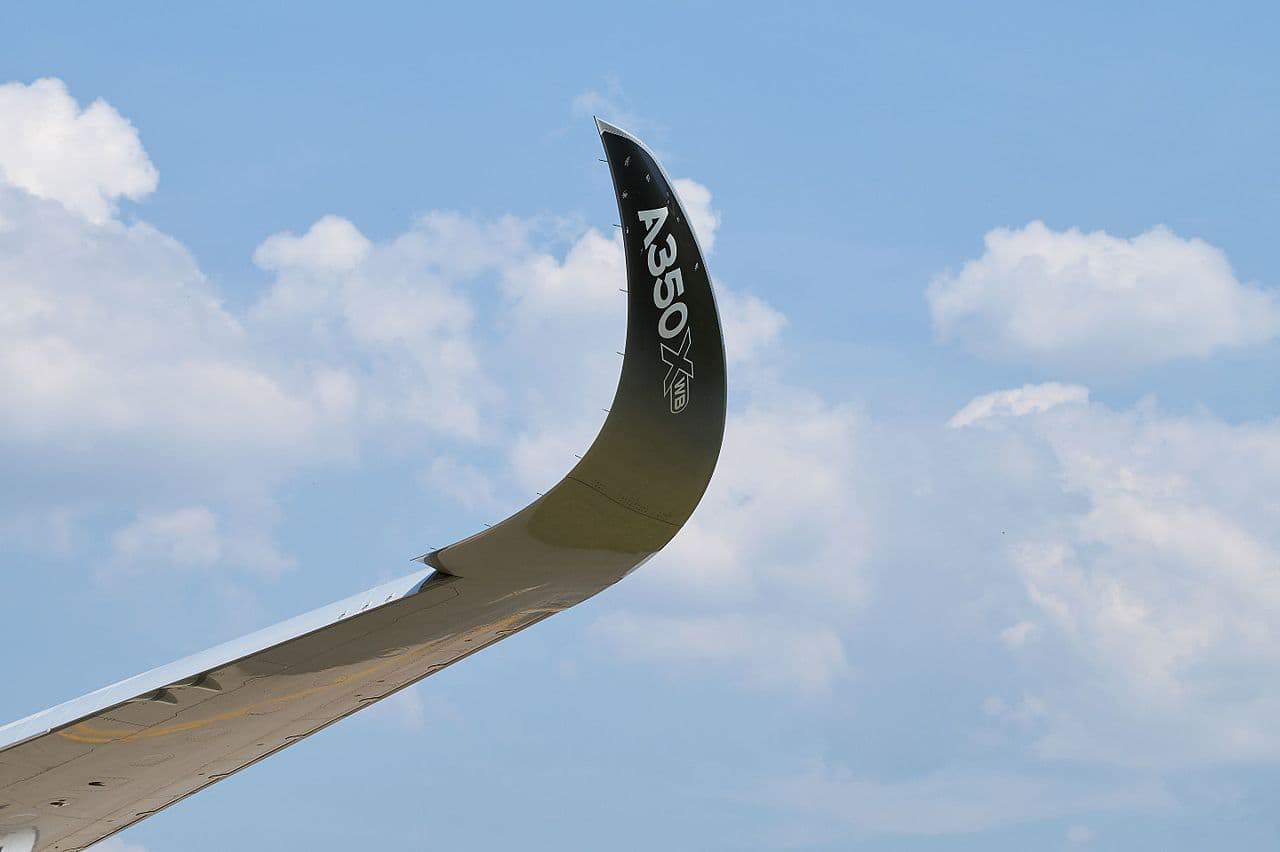Wind plays an important role in flying. But what exactly is the relationship between wind and wings? Is it a happy marriage or are take-offs into wind dangerous?
Table of Contents
Do Planes Take Off Into The Wind?
Aircraft don’t have to take off into wind, but it does help! Taking off into wind gives aircraft an extra boost into the sky, providing a shorter take off distance and a higher rate of climb.
Air is a fluid and is often compared to water when discussing concepts associated with flight. Every part of an aircraft is designed to minimize ripples in the airflow and with this logic, one might think a headwind would create resistance, making take off more difficult.
Anyone who’s ever tried to hold an umbrella steady on a burly day might also draw the same conclusion that wind would work against a plane attempting a take off, but as any pilot will tell you, the opposite is in fact true.
Lift
One of the first things a newbie pilot learns in ground school is the mechanics of lift; how the aircraft gets sucked into the air and stays there. Lift is the heartbeat of an aeroplane and is what ultimately allows aircraft to override gravity for a short space of time.
Headwinds
A headwind helps to generate lift. More air over the wing equals more lift and an increased airspeed. There is an important distinction between groundspeed and airspeed. Groundspeed is the speed a vehicle travels over the ground. For example, the speedo on a car measures groundspeed. Airspeed is the speed a vehicle travels through the air and is therefore measured in knots, the same unit as wind.

In the cockpit during take off the pilot sets the required thrust and monitors the ‘indicated airspeed’ as it winds up in front of them. Once rotate speed is reached, let’s nominate 130knots for example, the pilot gently pulls the control column, lift does its magic and ‘hurrah!’ they are airborne!
A headwind flowing over the wings during these moments would create more lift. As more air passes over the wind per second, our airspeed is increased and the time taken to reach 130 knots is reduced.
So take off is possible with calm winds, but a strong headwind means less runway used and an eager climb after lift-off. A headwind can have such a significant contribution to lift on lighter aircraft that it can cause a parked aeroplane to take off by itself if not parked correctly as you can see in the video below.
Tailwinds
So generally taking-off into wind is a good thing, making the pilot’s job easier. As you would expect, the converse is true for a tailwind (wind coming from behind you).
All aircraft are designed to be aerodynamic, having ‘a shape which reduces the drag from air moving past’. Drag acts in the opposite direction of a vehicle’s motion, like an invisible hand trying to hold us back on the runway.
In order to get airborne, lift and forward motion must be larger than drag and gravity. So to minimise drag, aircraft have a slippery shape that helps the air flow over the wings undisturbed. But the wing will only generate lift if the airflow is front-to back.
Airflow is created whenever the aircraft moves forward, but a tailwind makes airflow acceleration much slower. With a tailwind, the air’s journey from front-to-back of the wing is not as easy. Therefore less lift is generated, resulting in a longer acceleration time and decreased aircraft controllability.
On short runways a tailwind may degrade performance so much that departure must be prohibited. Before lining up on the runway the crew must be able to guarantee they can not only take off safely, but also stop within a safe distance if they must reject the take off.
When everything seems to be going against you, remember that the airplane takes off against the wind, not with it.
Henry Ford
Is it Dangerous to Fly on Windy Days?
As many readers may remember, in late 2019 storm Ciara battered Europe and brought huge winds with it. You may wonder if wind direction affects flight time. During storm Ciara the shortest New York to London flight was recorded – arriving a massive 80 minutes before schedule!
Whilst airborne, Ciara’s winds helped push the British Airways aircraft along its route, but on the ground a pilot’s relationship with wind is completely different. As some crews were setting new flight time records, others about to take off or land were having a very hard day at work!
Thankfully there is no designated headwind limit for take off and for passengers lucky enough to be flying from a runway aligned with the wind on those blustery days, take offs are able to proceed as usual. This is of course assuming the wind is constant.
Wind shear
When the wind is ‘on and off again’ it is referred to as gusting, but when a rapid change of direction and speed occurs the result is something that will put a shiver down the spine of anyone who has experienced it: windshear.
Windshear can be very dangerous, especially at a safety-critical point of flight such as take off or landing, and will be cause for an immediate go-around if experienced on final approach. Its direction and strength is totally unpredictable and caused at least 28 accidents and 700 fatalities between 1970 and 1985.
As always, your pilot will be trained to handle such scenarios should they arise, but many aircraft today are capable of detecting such a shift in wind before it reaches the aircraft. This is called a predictive windshear warning and is relatively new technology, having only been invented in 1994.
This system uses the Doppler effect, the theory that explains the changing sound of a passing ambulance, to detect rapid shifts in the air and help the crew to avoid it. More information on how doppler shift is used can be found here on the Honeywell website.
What About Crosswinds?
Whilst aircraft are not generally limited by headwinds, wind from any other direction does have a top end of the scale. This includes when taxying and even for opening the aircraft doors! So you may have landed safely, but be unable to disembark the aircraft until the wind calms.

The impact of wind on an aircraft depends on how many degrees left or right of the nose it is and with what force. Any wind blowing across the aircraft (ie not a headwind or a tailwind) is known as a crosswind.
Maximum Crosswinds
The maximum crosswind for take off and landing differs for every aircraft. A Cessna 172’s maximum demonstrated crosswind is 15knots, whereas the maximum crosswind for an A320 is 38knots, approximately 47 mph. Winds at this strength are known as gales, and raindrops flying at this velocity would hurt your skin.
The largest airliner in the world, the Airbus A380, has an even more impressive envelope and has demonstrated landing in crosswinds of up to 51knots/59mph. This is the kind of wind that starts to rip trees out of the ground!
Crosswind Techniques
Light crosswinds of 5 knots or below are barely noticeable, but anything stronger can make directional control challenging. Each aircraft has recommended crosswind techniques; some encourage take off with the control column pointing into wind, whereas other types recommend just the rudder to control lateral deviation.
This video shows pilots trying to land in these conditions and demonstrates just how difficult it can be to keep straight on the runway centre-line.
Testing the Limits
Aircraft manufacturers and sky gods, a.k.a. test pilots, determine the limits of the aircraft prior to production to create a safety ‘envelope’. When flying within this range of limits the average pilot will be able to handle the aircraft safely.
During testing the plane is pushed as hard as it can go. Machines will bend the wings until they find the snapping point and testers will deliberately drag the aircraft’s tail along the runway to see the effects.
You may have noticed earlier that the Cessna 172’s crosswind limit is the ‘max demonstrated’. Although this may be the greatest crosswind landing performed by a test pilot, some C172 pilots have claimed to land it in winds double this strength! This terminology leaves the limitation at the pilot’s discretion.
If you’re interested in what an aircraft goes through during the testing process, watch this video for a closer look:
References ▾
- ‘Explainer: Why Do Airplanes Take Off into the wind?’, Sean O’Neill, Conde Nast Traveler, June 2012
- ‘Why Planes Take Off Into The Wind’, Monroe Aerospace, April 2017
- ‘What Are The Maximum Wind Limits For a Commercial Jet Aircraft?’, Flight Deck Friend.com
- ‘Windshear: Why pilots learn to respect the weather’, Charlie Page, The Points Guy UK, January 2020
- ‘Review of Aviation Accidents Caused by Windshear and Identification Methods’, W.L. Guan and K. Yong, ResearchGate, April 2002
Related Posts












